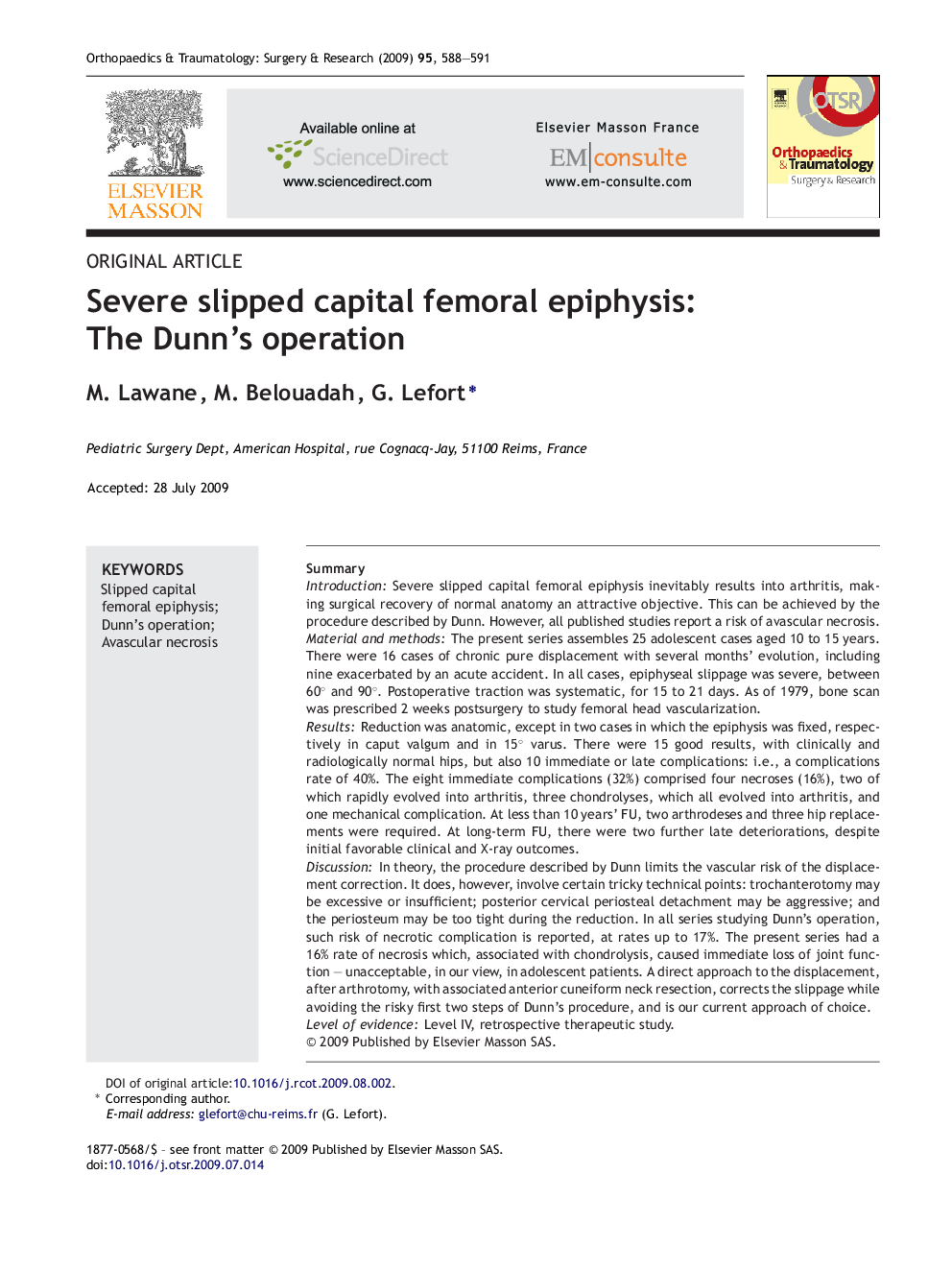| کد مقاله | کد نشریه | سال انتشار | مقاله انگلیسی | نسخه تمام متن |
|---|---|---|---|---|
| 4082548 | 1267644 | 2009 | 4 صفحه PDF | دانلود رایگان |

SummaryIntroductionSevere slipped capital femoral epiphysis inevitably results into arthritis, making surgical recovery of normal anatomy an attractive objective. This can be achieved by the procedure described by Dunn. However, all published studies report a risk of avascular necrosis.Material and methodsThe present series assembles 25 adolescent cases aged 10 to 15 years. There were 16 cases of chronic pure displacement with several months’ evolution, including nine exacerbated by an acute accident. In all cases, epiphyseal slippage was severe, between 60° and 90°. Postoperative traction was systematic, for 15 to 21 days. As of 1979, bone scan was prescribed 2 weeks postsurgery to study femoral head vascularization.ResultsReduction was anatomic, except in two cases in which the epiphysis was fixed, respectively in caput valgum and in 15° varus. There were 15 good results, with clinically and radiologically normal hips, but also 10 immediate or late complications: i.e., a complications rate of 40%. The eight immediate complications (32%) comprised four necroses (16%), two of which rapidly evolved into arthritis, three chondrolyses, which all evolved into arthritis, and one mechanical complication. At less than 10 years’ FU, two arthrodeses and three hip replacements were required. At long-term FU, there were two further late deteriorations, despite initial favorable clinical and X-ray outcomes.DiscussionIn theory, the procedure described by Dunn limits the vascular risk of the displacement correction. It does, however, involve certain tricky technical points: trochanterotomy may be excessive or insufficient; posterior cervical periosteal detachment may be aggressive; and the periosteum may be too tight during the reduction. In all series studying Dunn's operation, such risk of necrotic complication is reported, at rates up to 17%. The present series had a 16% rate of necrosis which, associated with chondrolysis, caused immediate loss of joint function – unacceptable, in our view, in adolescent patients. A direct approach to the displacement, after arthrotomy, with associated anterior cuneiform neck resection, corrects the slippage while avoiding the risky first two steps of Dunn's procedure, and is our current approach of choice.Level of evidenceLevel IV, retrospective therapeutic study.
Journal: Orthopaedics & Traumatology: Surgery & Research - Volume 95, Issue 8, December 2009, Pages 588–591